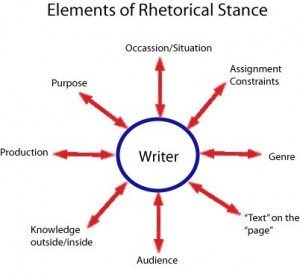
We’re digging in the archives today and wanted to again share a wonderful piece written by Writing Program faculty member Phoebe Zerwick.
I’ve been talking with my students all semester about stance. It’s a tough concept to explain. How does a writer find the balance between argument and tone that works for the audience? This month, an article about abortion that I’ve been working on for more than two years was finally published in the December issue of Glamour magazine. And as I read over it, for possibly the hundredth time, I realized that it makes a terrific tool for talking about a writer’s stance.
I started in July, 2012 just as a new law that mandates an ultrasound before abortion and a 24-hour waiting period took effect in Virginia. The Falls Church Healthcare Center, about 10 miles outside of D.C., was generous enough to open its doors to me and allow me to interview women who were either waiting for their ultrasound or there for an abortion. I wanted to get beyond the political rhetoric and get to the voices of real women facing an unwanted pregnancy. And because I wanted to provide readers with a nuanced discussion, I headed next to a crisis pregnancy center in Norfolk, Va., where pregnant women can get an ultrasound and counseling – but not an abortion. I did the rest of the reporting by phone, eventually talking with 20 women about the ways in which the ultrasound shaped their decision about abortion.
 Then it was time to write, and this is where the question of stance came in. I tell my writing students to avoid the first person, that is, unless there’s a compelling reason to insert themselves into the text. My admonition to my journalism students is even stronger: they are to leave themselves out of their writing. I knew before I started my reporting that abortion is one of the most polarizing topics in our culture. But I found that even in the world of experts, there were no neutral sources to help me interpret my findings; the researchers are either for or against abortion. So it was up to me to find the middle ground. I wanted transparency. I wanted readers to know exactly how I had found the 20 women who made up my small sample. And I wanted my readers to trust what I had to say and feel that they had learned something new about a subject most of us have made up our minds about. I decided that the best way to enter into this fraught conversation was by writing as honestly as I could – in the first person. I did so sparingly, using the first person just four times. Here’s an example: “The more stories I heard, the more I could understand how both sides have become so convinced they are right.” I would describe that as a stance that’s factual, friendly and a little removed from the fray — as compelling a reason as any for writing in the first person.
Then it was time to write, and this is where the question of stance came in. I tell my writing students to avoid the first person, that is, unless there’s a compelling reason to insert themselves into the text. My admonition to my journalism students is even stronger: they are to leave themselves out of their writing. I knew before I started my reporting that abortion is one of the most polarizing topics in our culture. But I found that even in the world of experts, there were no neutral sources to help me interpret my findings; the researchers are either for or against abortion. So it was up to me to find the middle ground. I wanted transparency. I wanted readers to know exactly how I had found the 20 women who made up my small sample. And I wanted my readers to trust what I had to say and feel that they had learned something new about a subject most of us have made up our minds about. I decided that the best way to enter into this fraught conversation was by writing as honestly as I could – in the first person. I did so sparingly, using the first person just four times. Here’s an example: “The more stories I heard, the more I could understand how both sides have become so convinced they are right.” I would describe that as a stance that’s factual, friendly and a little removed from the fray — as compelling a reason as any for writing in the first person.
Phoebe Zerwick, November, 2014